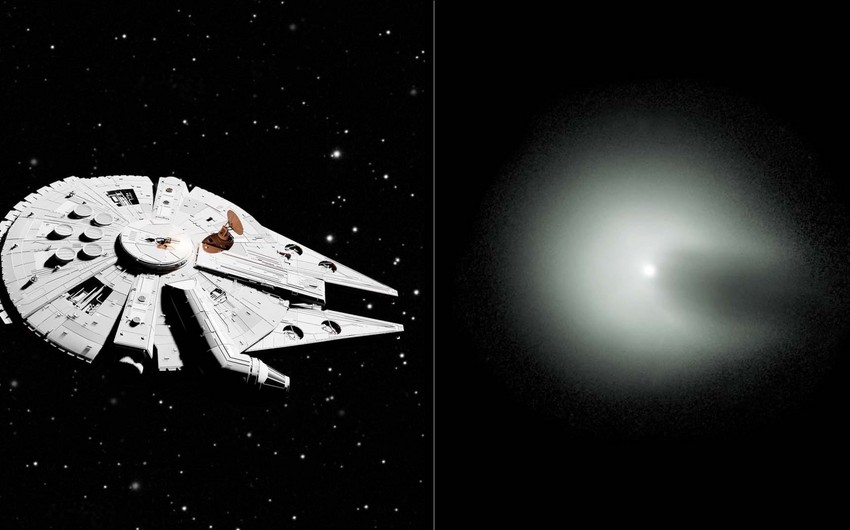Comet 12P/Pons-Brooks, also known as the "devil comet," will be positioned close to the sun during the April 8 total solar eclipse. Some photographers also predict that the volcanic comet may be visible to the naked eye, especially if it blows its top before the big event, Report informs referring to Live Science.
The explosive "devil comet" could rear its green-tinged, hornless head during the total solar eclipse on April 8. The city-size comet, which is currently racing toward Earth, may show up in photos of the rare astronomical event. And if it erupts before totality — the phase of the eclipse when the sun is completely blocked — the comet could also be visible to the naked eye, one expert claims.
Comet 12P/Pons-Brooks (12P), also known as the devil comet, is a 10.5-mile-wide (17-kilometer) comet that circles the sun on a highly elliptical orbit once roughly every 71 years. 12P is a cryovolcanic, or ice volcano, comet. That means it occasionally erupts when radiation from the sun cracks open its icy shell, or nucleus, allowing it to shoot a combination of ice and gas, known as cryomagma, from its frosty innards into space. When this happens, the cryomagma expands the comet's coma — the cloud of gas and dust around a comet's nucleus — making it appear much brighter for the next few days.
12P is expected to make its closest approach to the sun on April 24 before slingshotting around our home star and making its closest approach to Earth on June 2. This means that during the upcoming eclipse, which will be visible across large parts of North America, 12P will be a lot brighter than it is now and will be positioned very close to the sun. As a result, the comet could be visible to photographers with powerful lenses when the moon temporarily blocks out the sun's light, according to Spaceweather.com.


 https://images.report.az/photo/d9586c42-6b58-3ad5-a720-ed472ded3cf7.jpg
https://images.report.az/photo/d9586c42-6b58-3ad5-a720-ed472ded3cf7.jpg

